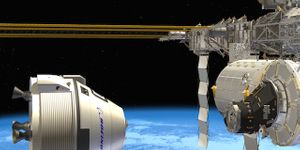This Mechanical Running & Jumping Cheetah Could Be the Military's Next Secret Weapon
Researchers over at Massachusetts Institute of Technology (MIT) have spent the better part of the last few years building a mechanical quadruped capable of not only running at a fast pace, but also capable of observing the path that it is running towards for obstacles and then jumping over the obstacle to the other side safely.

According to the report from MIT, the robot cheetah can calculate the speed it's running at, then calculate the height of the obstacle coming before it, and then based on the variables it's given, it can calculate the proper amount of force to apply to the legs to get the body up in the air high enough to clear the obstacle.
Even cooler is that when the beast lands, it resumes its pace. It's like an unstoppable Terminator cat that just gives you the evil-eyed look that says, "Come at me bro!"
The heavy mechanized cheetah was able to clear obstacles as high as 18 inches while traveling at an average distance of 5 miles per hour.
Check out MIT's video demonstration below:
So how does it do that? - According to MIT, the machine uses a special visual technology called LIDAR, which relies on the reflections of laser beams to help visualize the terrain in front of it.
Advanced mathematical algorithms are used to help the beast accurately decide how high to jump. MIT notes that the robot is programmed with feasibility in mind rather than optimization.
"If you want to optimize for, say, energy efficiency, you would want the robot to barely clear the obstacle - but that's dangerous, and finding a truly optimal solution would take a lot of computing time," says Sangbae Kim, an assistant professor at MIT. "In running, we don't want to spend a lot of time to find a better solution. We just want one that's feasible."
With its time saving algorithm in mind, this machine is capable of quick reaction times and impressively satisfying results of around 90% accuracy.
At this point in time, jump testing has been performed on an indoor treadmill, but researchers still want to fine-tune the machine's performance on less-controlled terrain, such as sand, dirt, and rocks. This would make the machine a viable candidate for military use that could one day keep military personnel out of harm's way.
After all, the project is funded in part by the military.
Source: MIT








